By Karthik Tiruvarur, Assistant Vice President – ICTPH
The estimated prevalence of blindness in 1990 ranged from 0.08% in children to 4.4% in persons aged over 60 years, with an overall global prevalence of 0.7%. In view of the proportion of treatable eye diseases or treatable causes of blindness, such as cataract, trachoma, onchocerciasis and some eye conditions in children, it was estimated that 75% of all blindness in the world could have been avoided. (VISION – 2020 Global Initiative for the Elimination of Avoidable Blindness Action Plan 2006 – 2011, 2007) (Blindness in the Elderly, Editorial, 2008)
The ICTPH Health Systems approach (Johar, 2010) aims to facilitate a comprehensive healthcare delivery model for remote rural Indian population. Provisioning ophthalmic services at primary-care entails refractive error correction (myopia, hypermetropia, astigmatism, and presbyopia), cataract – detection, management and referral for surgical intervention, managing chronic disease complications such as diabetic retinopathy by regular fundus examination using ophthalamoscopy and glaucoma through intraocular pressure assessment using tonometry.
With this framework, ICTPH launched its village based servicing of community ophthalmic requirements through its field based partner SughaVazhvu Healthcare. The village based primary healthcare delivery points called the Rural Micro Health Centres (RMHCs), offer a unique platform to provision the entire gamut of healthcare services – inclusive of vertical, specialty specific domains such as dentistry, ophthalmology and mental health services.
The ophthalmic intervention has been launched in all of SughaVazhvu’s RMHCs: Andipatti on June 29, 2011, in Allakkudi on July 18, 2011 and in Karambayam on September 28, 2011. At present, the ophthalmic intervention at SughaVazhvu comprises:
- Measurement of visual acuity
- Treatment for basic eye infections such as conjunctivitis, blepharitis
- Detection of eye conditions such as pterygium, cataract, glaucoma, retinopathy for further referral.
- Comprehensive refraction correction including dispensing of spectacles at the RMHC.
On the day of launch, at Andipatti, we had 52 patients visit the RMHC for vision test, at Alakkudi, we had 136 patients visit the RMHC for their vision test.
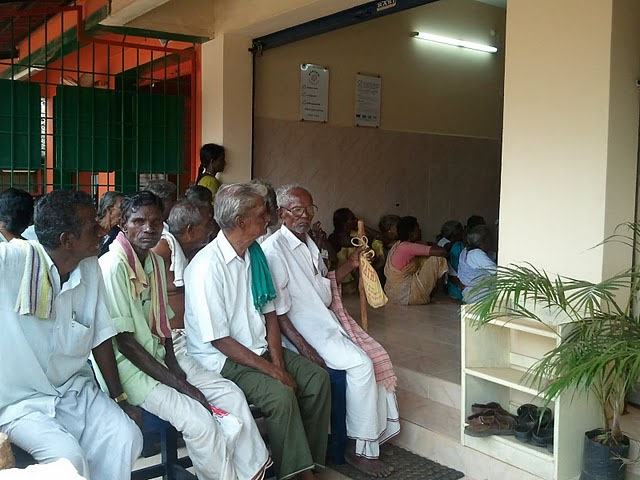
July 18, 2011: Launch of Vision intervention at Alakkudi RMHC
(patients awaiting their turn in the waiting area; 136 patients visited on the day of launch)

July 18, 2011: Launch of Vision intervention at Alakkudi RMHC
(a 6 year old boy’s visual acuity being tested by our Health Extension Worker)
Over the three months that we provisioned vision services in our RMHCs, we have seen 254 cases (25% of total visits) with specific eye complaints or diagnosis. In eye conditions, cataract shows up as the major condition encountered so far. So far, we have sold 68 pairs of spectacles at our RMHCs to people diagnosed with refractive errors and wanting to purchase spectacles. Following charts give a synopsis of patient flow, visual acuity and data related to conditions such as cataract, conjunctivitis.

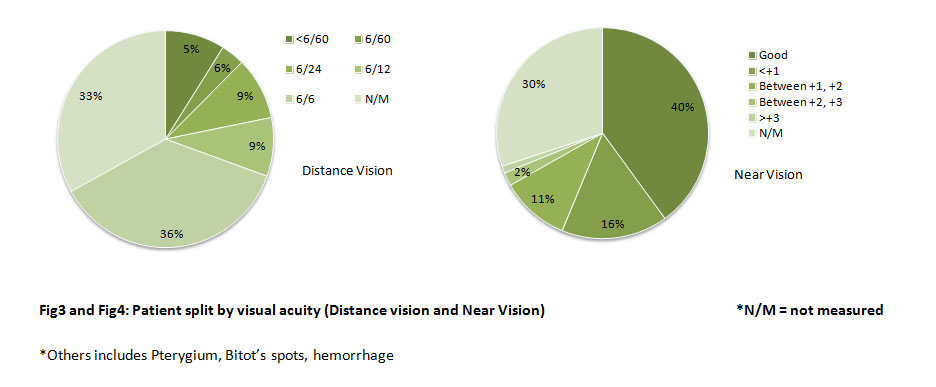
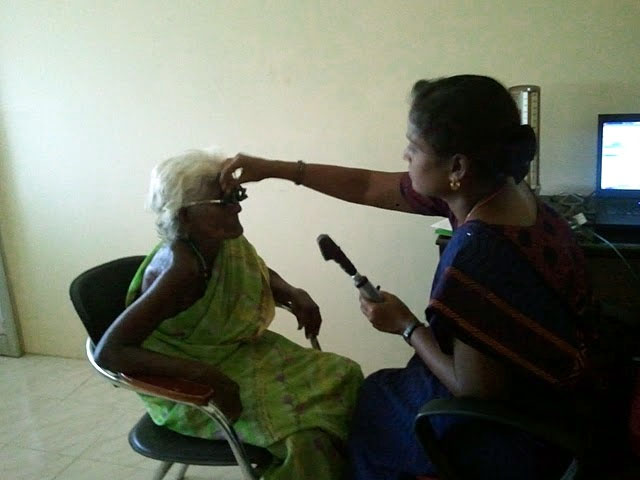
(At the Alakkudi RMHC, Dr.Uma Priyadarshini, the resident physician,
assessing the objective refraction correction using streak retinoscopy)
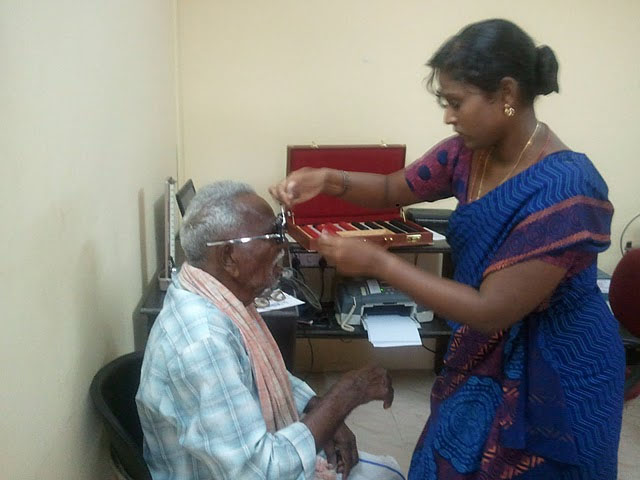

(A display of models of spectacles at the Andipatti RMHC. Patients choose from an available selection of frames and curiously look through the mirror to check out their new look!)
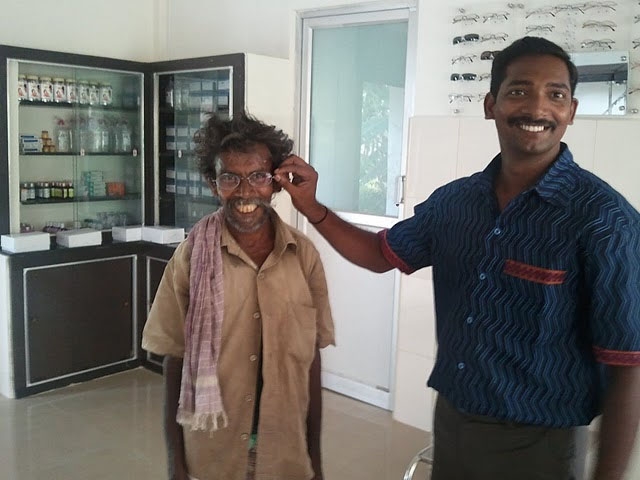
(One of the first few patients to purchase distance vision glasses at the RMHC; a goat herd by profession and consequently a traveler, he was keen to get his glasses before he set off from Andipatti. His eagerness and joy upon receiving glasses he ordered was a great re-affirmation of our intervention.)
Way forward:
At SughaVazhvu, we plan to roll out a school based dental intervention for the population soon. Once we roll out this intervention, we shall explore options of combined in-school screening of students for dental and vision related conditions. Given our RMHC capabilities, we are well positioned now to dispense glasses to students by referring them to the nearest RMHC.
Over the last 3 months wherein we started implementation of the vision intervention at SughaVazhvu, we have observed 144 patients with a cataract. As yet, we have no formal referral network in place and we deal with patients on a case by case basis. We shall address the referral pathways of such secondary and tertiary conditions once our strategy for managed care, which we currently are developing is finalized. At present, we have 8 eye infection/disease protocols. While most of these have been well internalized in our system, over the next few months, we shall endeavor to refine them to our context and also increase the breadth of curative and preventive protocols specific to vision.
Overall, the vision intervention has taken off on a very positive note. In helping our populations see better, we have ourselves moved a step closer in realizing our vision of accessible and affordable healthcare for rural Indian populations!
The detailed report can be downloaded here.


Leave a Reply
2 Comments on "ICTPH launches its primary-care Ophthalmic Intervention"
It was great to read this and see “Development impact” in action ! Loved the photo of the chap with his new glasses
This is a very valuable initiative. As someone suffering from myopia, I can attest to the difficulties caused by not having spectacles and proper vision. This is even more limiting in the case of cataracts. Good work!